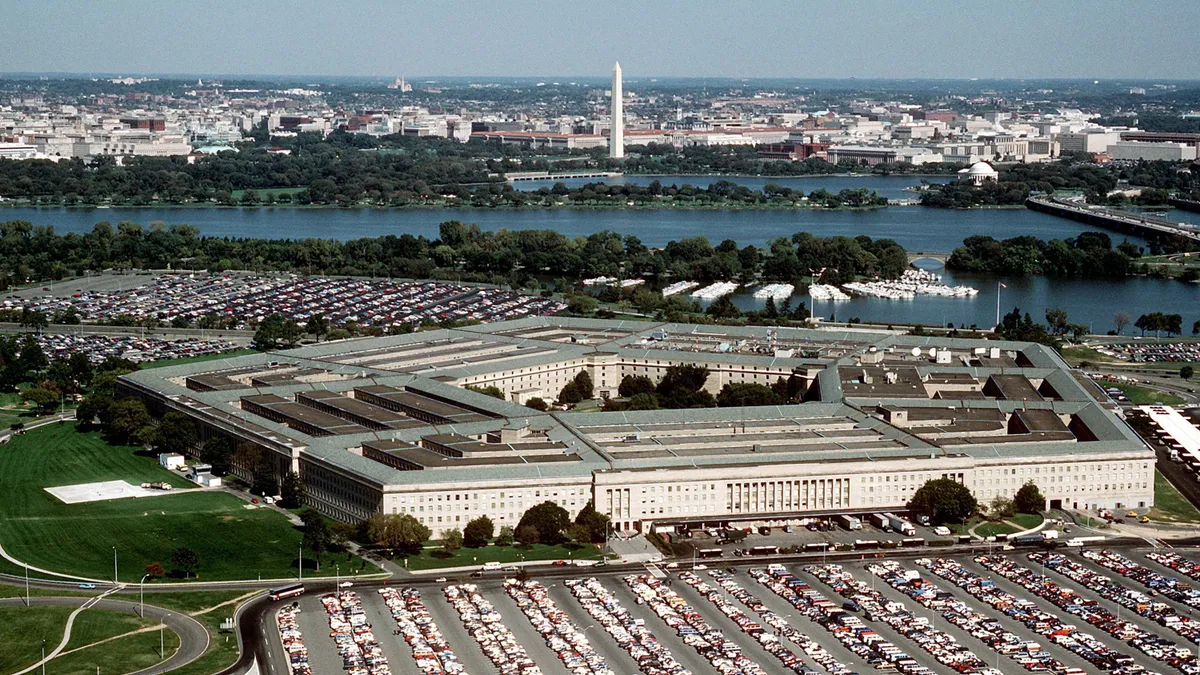Dive Brief:
- Most historically Black colleges and universities did not receive significantly more defense research funding in 2020 than they did in 2010, even though the U.S. Department of Defense and Congress sought to boost research dollars routed to HBCUs. The same was true of other higher ed institutions enrolling a majority number of non-White students.
- That's according to a new report released Thursday by the National Academies of Sciences, Engineering, and Medicine. The report found that HBCUs and minority institutions — defined in defense legislation as institutions with at least 50% racial minority student enrollment — receive a disproportionately smaller share of research funding from the Pentagon than other institutions. It describes that fact as a "clear disconnect" between reality and the intent of Congress and the Defense Department.
- The Defense Department needs to invest strategically over the long term if it wants to expand research capacities of HBCUs and minority institutions, according to the report, which was sponsored by the Department of Defense. It also said the Pentagon should request to double its targeted funding for HBCUs and minority institutions.
Dive Insight:
The new report comes at a time of high interest in investing in HBCUs and minority-serving institutions in the wake of the racial justice movement propelled by the 2020 police killing of George Floyd. Research has uncovered massive historical underfunding at HBCUs.
Federal research dollars are a major component of institutional capacity and public perception about a college. Research spending is a core component of the closely watched Carnegie Classifications for colleges, which require institutions to spend at least $5 million on research to achieve R1 or R2 status, denoting the highest levels of research activity. Critics point out that no HBCUs have received coveted R1 status, in part because of the financial barriers stemming from the disparity in federal grant distribution.
The Department of Defense's research spending is a major driver of the science and technology ecosystem in the U.S., according to the chair of the committee that wrote the report, Eugene DeLoatch. DeLoatch is an emeritus professor and the inaugural engineering school dean at Morgan State University, an HBCU in Baltimore.
But the Department of Defense's own research spending for HBCUs and minority institutions lags behind other federal agencies.
DOD research and development expenditures for HBCUs and minority institutions amounted to 1.1% of the agency's total R&D spending in 2019 — $72.5 million out of $6.65 billion, according to the report. That's a lower share than the Department of Energy, which spent 1.9% of its $1.94 billion R&D budget with the institutions, and NASA, which spent 2% of its $1.64 billion R&D budget with them.
"Clear discrepancies remain across the most recent decade of funding, geographical location and Carnegie Classification," DeLoatch said during a webinar on the committee's findings. Multiple HBCUs and minority institutions have demonstrated the ability to conduct research and interest in doing so, according to DeLoatch.
The stagnant progress toward research funding parity was due, in part, to a lack of formalized action by the DOD and its affiliates, according to the report.
While Congress and federal agencies have encouraged partnerships between HBCUs, predominantly White institutions, the government and industry forces, researchers could not find an example of a time when the DOD directed or incentivized such collaborations. The report also found a lack of data collection and coordination between different federal research programs. The gap made it nearly impossible to evaluate the effect of the research funding distributed to HBCUs and minority institutions.
Recommendations for the Defense Department in the report overarchingly focused on deliberate planning and consistency, with specific proposals including:
- Analyze HBCU and minority institution research capacities to properly assess the effects of DOD investments.
- Develop programs to increase HBCU and minority institution representation in the defense workforce, with a goal to increase proportional representation by fiscal year 2025.
- Regularly contact HBCUs and minority institutions about funding opportunities to communicate about their focus, structure and requirements.
- Build long-term relationships with HBCU and minority institution research personnel.
- Add space for HBCU and minority institution faculty to sit on research sponsors' advisory boards.














